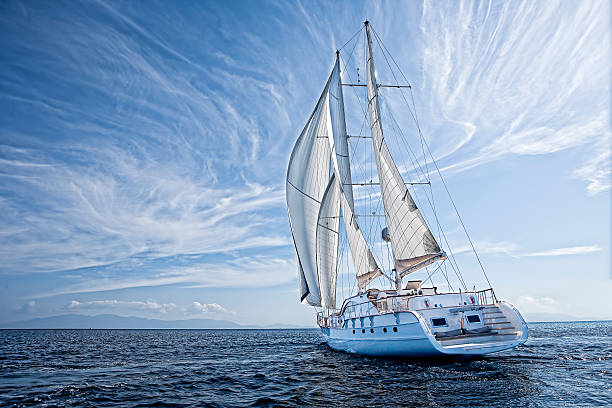The World of Luxury Bags: A Journey Through Elegance and Craftsmanship
Luxury bags have long been a symbol of status, elegance, and personal style. They are not just accessories but investments that often come with a rich history and meticulous craftsmanship. This article delves into the fascinating world of luxury bags, exploring their origins, iconic brands, the artistry involved in their creation, and their significance in fashion.
The Origins of Luxury Bags
The concept of luxury bags dates back centuries when bags were first created out of necessity. However, as society evolved, so did the purpose and design of bags. In the 19th century, the advent of luxury travel brought about the need for high-quality, stylish luggage, which laid the foundation for the luxury bag industry.
One of the earliest pioneers of luxury bags was Louis Vuitton. Founded in 1854, Louis Vuitton began as a maker of trunks and luggage. The brand's innovative designs, such as the flat-topped trunk that could be easily stacked, revolutionized travel bags and established Louis Vuitton as a symbol of luxury.
Iconic Luxury Bag Brands
Several brands have become synonymous with luxury bags, each with its unique heritage and style. Among these, a few stand out for their influence and legacy.
Louis Vuitton
Louis Vuitton remains one of the most revered names in luxury bags. Known for its distinctive monogram and Damier patterns, Louis Vuitton bags are crafted with precision and an eye for detail. The brand's commitment to quality and innovation has kept it at the forefront of the luxury market.
Chanel
Chanel's quilted bags, particularly the iconic 2.55, are a testament to timeless elegance. Introduced in 1955 by Coco Chanel, the 2.55 bag features a unique quilting pattern inspired by the jackets of stable boys. Its chain strap and elegant design have made it a favorite among fashion enthusiasts.
Hermès
Hermès is another brand that epitomizes luxury and exclusivity. The Birkin and Kelly bags are perhaps the most famous Hermès creations. Named after actress Jane Birkin and Princess Grace Kelly, these bags are handcrafted with meticulous attention to detail and often come with waiting lists spanning years.
Gucci
Gucci's bamboo-handle bags and the GG logo have become iconic symbols of luxury. The brand's ability to blend traditional craftsmanship with contemporary designs has made it a staple in the wardrobes of the fashion-forward.
The Art of Craftsmanship
What sets luxury bags apart from their mass-produced counterparts is the level of craftsmanship involved. Each bag is often handcrafted by skilled artisans, a process that can take hours or even days.
The materials used are of the highest quality, ranging from exotic leathers to fine textiles. These materials are carefully selected and treated to ensure durability and a luxurious finish. For instance, Hermès uses only the finest calfskin, alligator, and ostrich leathers, which are tanned using traditional methods to achieve their signature suppleness and sheen.
The construction of a luxury bag involves multiple stages, including cutting, stitching, and finishing. Each step requires precision and expertise. For example, the stitching on a Louis Vuitton bag is done by hand, with artisans using a special waxed linen thread that ensures longevity and a distinctive look.
The Significance of Luxury Bags in Fashion
Luxury bags have a significant impact on fashion, often setting trends and influencing other aspects of the industry. They are not just accessories but statements of personal style and status.
Many luxury bags become iconic pieces that define an era or a fashion movement. For instance, the Chanel 2.55 is associated with the rise of women's independence and elegance in the mid-20th century. Similarly, the Hermès Birkin bag has become a symbol of ultimate luxury and exclusivity, often seen on the arms of celebrities and fashion icons.
The marketing and presentation of luxury bags also play a crucial role in their status. Brands like Louis Vuitton and Chanel invest heavily in creating an aura of exclusivity and desirability around their products. This includes everything from high-profile ad campaigns to collaborations with artists and designers.
The Market for Luxury Bags
The market for luxury bags is a thriving and dynamic sector within the fashion industry. Despite economic fluctuations, the demand for luxury bags remains robust, driven by a growing global middle class and the increasing importance of fashion as a form of self-expression.
In recent years, the market has seen significant growth in Asia, particularly in China. Affluent consumers in these regions have a strong appetite for luxury goods, including bags. This has led to brands expanding their presence and tailoring their offerings to cater to local tastes and preferences.
The second-hand market for luxury bags has also seen substantial growth. Platforms like The RealReal and Vestiaire Collective have made it easier for consumers to buy and sell pre-owned luxury bags. This not only provides more accessible options for luxury enthusiasts but also promotes sustainability within the fashion industry.
Investment Value of Luxury Bags
Luxury bags are often seen as investment pieces. Certain models, such as the Hermès Birkin and Chanel 2.55, can appreciate in value over time, making them attractive not just for their aesthetic appeal but also as financial assets.
The investment value of a luxury bag depends on several factors, including its condition, rarity, and brand. Limited edition releases or bags with unique features tend to hold their value well. For instance, a Birkin bag in a rare color or with exotic leather can fetch significantly higher prices on the resale market.
Collectors often seek out vintage luxury bags, as these pieces offer a glimpse into the history and evolution of fashion. Owning a vintage bag from a prestigious brand is akin to owning a piece of art, with its value appreciating as it ages.
The Future of Luxury Bags
The future of luxury bags looks promising, with brands continuously innovating to meet the changing demands of consumers. Sustainability and ethical practices are becoming increasingly important, with many brands adopting eco-friendly materials and production methods.
Technological advancements are also influencing the design and functionality of luxury bags. Smart bags with features like built-in chargers and RFID protection are becoming more popular, blending luxury with practicality.
Personalization is another trend that is gaining traction. Consumers are seeking unique, customized pieces that reflect their individuality. Brands like Louis Vuitton and Gucci offer bespoke services, allowing customers to personalize their bags with monograms, colors, and other custom features.
Conclusion
Luxury bags are more than just fashion accessories; they are symbols of craftsmanship, history, and personal style. From the storied halls of Louis Vuitton to the ateliers of Hermès, these bags represent the pinnacle of fashion and design.
As the market continues to evolve, luxury bags will remain coveted items, cherished for their beauty, quality, and the statement they make. Whether as a personal indulgence or an investment, a luxury bag is a timeless piece that transcends trends and seasons, embodying the essence of elegance and sophistication.
.jpg)

.jpg)

